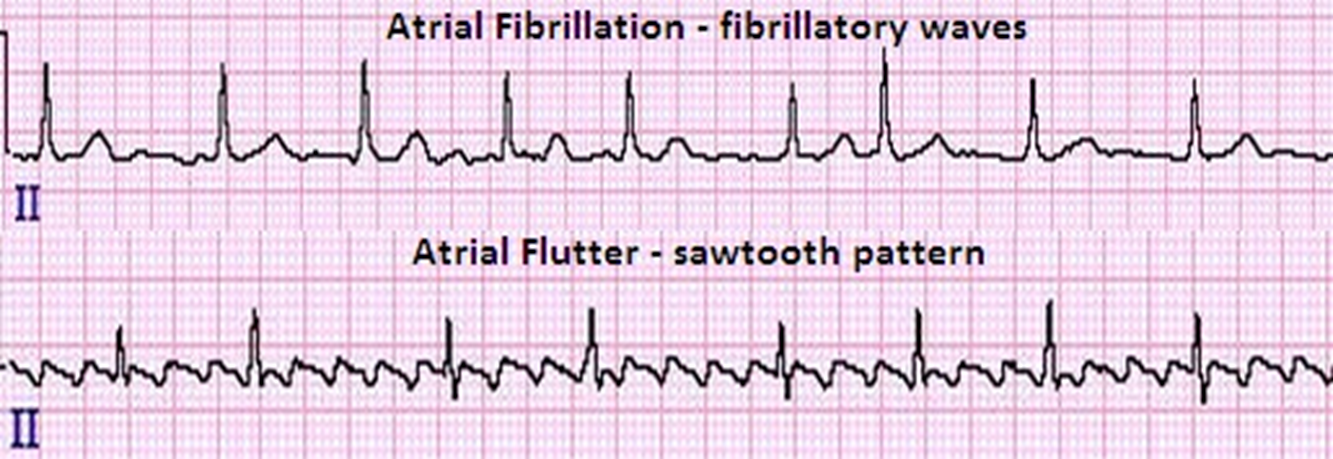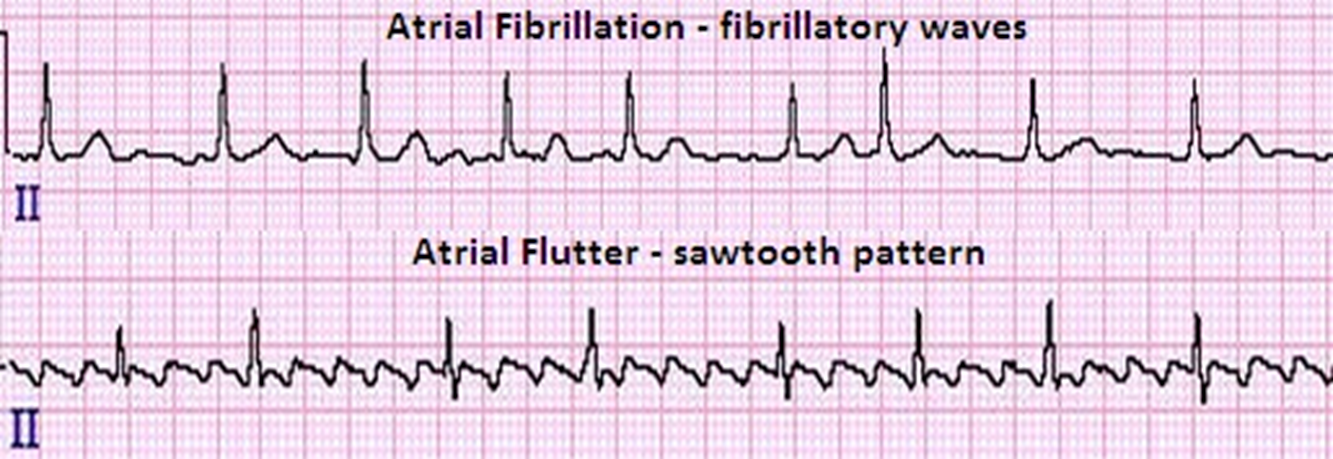The nurse is providing care for a patient with the following tracing on the electrocardiogram (ECG) for atrial fibrillation. What prescription should the nurse anticipate from the primary healthcare provider (PHCP)?

Adenosine
Diltiazem
Atropine
Captopril
The Correct Answer is B
Choice A rationale: Adenosine Adenosine is a naturally occurring substance that relaxes and dilates blood vessels. It also affects the electrical activity of the heart. Adenosine is used to help restore normal heartbeats in people with certain heart rhythm disorders. However, it is not typically used for atrial fibrillation.
Choice B rationale: Diltiazem Diltiazem belongs to a class of medications called calcium-channel blockers. It works by relaxing the blood vessels so the heart does not have to pump as hard. Diltiazem also increases the supply of blood and oxygen to the heart. It is used in adults alone or in combination with other medications to treat hypertension (high blood pressure) or symptoms of angina (chest pain). Diltiazem injection is used in adults to treat certain heart rhythm disorders such as atrial fibrillation.
Choice C rationale: Atropine Atropine is a tropane alkaloid and anticholinergic medication used to treat certain types of nerve agent and pesticide poisonings as well as some types of slow heart rate, and to decrease saliva production during surgery. However, it is not typically used for atrial fibrillation.
Choice D rationale: Captopril Captopril is used in adults alone or in combination with other medications to treat high blood pressure (hypertension) and congestive heart failure.
Captopril is also used to improve survival and reduce the risk of heart failure after a heart attack in patients with a heart condition called left ventricular hypertrophy (enlargement of the walls of the left side of the heart)4. However, it is not typically used for atrial fibrillation.

Nursing Test Bank
Naxlex Comprehensive Predictor Exams
Related Questions
Correct Answer is C
Explanation
Choice A rationale
Administering Ibuprofen as scheduled is a proper nursing intervention for a patient with pericarditis. Ibuprofen is a nonsteroidal anti-inflammatory drug (NSAID) that can help reduce inflammation and relieve pain.
Choice B rationale
Monitoring the patient for complications of cardiac tamponade is a proper nursing intervention for a patient with pericarditis. Cardiac tamponade is a serious condition that can occur as a complication of pericarditis.
Choice C rationale
Placing the patient in a supine position to relieve pain is not a proper nursing intervention for a patient with pericarditis. This position could actually increase the patient’s discomfort.
Instead, the patient should be positioned upright and leaning forward to help relieve pain.
Choice D rationale
Monitoring the patient for pulsus paradoxus and muffled heart sounds is a proper nursing intervention for a patient with pericarditis. These are potential signs of worsening pericarditis or complications such as cardiac tamponade.
Correct Answer is B
Explanation
Choice A rationale
While reducing anxiety and alleviating pain are important, they are not the most appropriate initial nursing intervention for a client with substernal chest pain, elevated ST segment on the ECG, and increased cardiac troponin level.
Choice B rationale
Enhancing myocardial oxygenation and decreasing cardiac workload are crucial initial nursing interventions for a client presenting with these symptoms. These actions can help prevent further damage to the heart muscle.
Choice C rationale
Removing family stressors and providing a tranquil environment, while beneficial, are not the most appropriate initial nursing interventions for a client with these symptoms.
Choice D rationale
Initiating a low-sodium diet and limiting fluid intake are important for managing heart failure, but they are not the most appropriate initial nursing interventions for a client with these symptoms.
Whether you are a student looking to ace your exams or a practicing nurse seeking to enhance your expertise , our nursing education contents will empower you with the confidence and competence to make a difference in the lives of patients and become a respected leader in the healthcare field.
Visit Naxlex, invest in your future and unlock endless possibilities with our unparalleled nursing education contents today
Report Wrong Answer on the Current Question
Do you disagree with the answer? If yes, what is your expected answer? Explain.
Kindly be descriptive with the issue you are facing.
